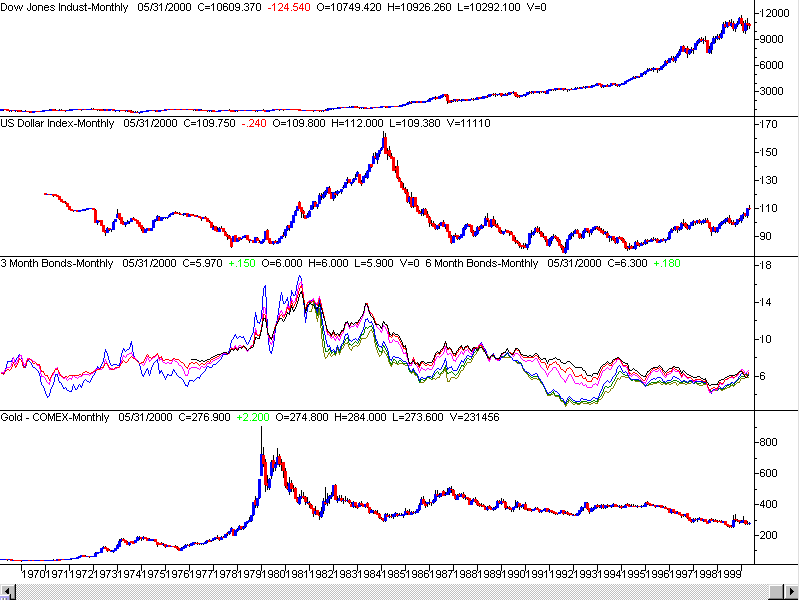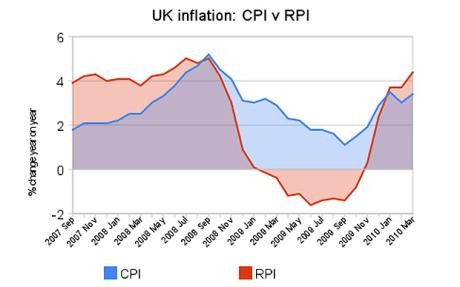Inflation Forecast CXO Advisory
Post on: 5 Март, 2016 No Comment

The inflation rate may be the most fundamental determinant of the discount rate used to calculate the present value of an investment. Changes in the inflation rate therefore affect stock market valuation. What is the best way to forecast the inflation rate? How reliable is inflation forecasting? The following discussion provides the CXO Advisory Group LLC forecasts for U.S. total and core (excluding food and energy) inflation rates, along with the method for constructing the forecast and the rationale for the methodology.
This forecast is a key input for our Real Earnings Yield Model of the U.S. stock market.
We update this discussion monthly as the Bureau of Labor Statistics (BLS) releases new Consumer Price Index data.
FORECAST
The following chart shows our forecast for the 12-month trailing, non-seasonally adjusted total and core inflation rates over the next year by month. The error bars indicate one standard deviation above and below the forecasts based on a backtest of all forecasts since 1990. We have not tested the degree to which the distributions of errors are normal; to the extent they are not, the normal interpretation of standard deviation as a measure of potential variability does not apply.
METHODOLOGY
We rely on simple technical analysis to forecast the inflation rate. By technical analysis, we mean prediction based only on past Consumer Price Index (CPI) and associated inflation rate data rather than prediction based on fundamental economic data such as trends in commodity prices, employment levels and wages. Key guiding beliefs for this analysis are:
- There is probably an important degree of calendar regularity to the inflation rate, perhaps due to seasonal variation in supply of and demand for goods and services. In other words, the inflation rate for a particular month during the next 12 months is likely related more to past inflation rate behavior during that same calendar month than to inflation rates during other past months.
- For a short-term inflation rate forecast, momentum is probably more important than reversion. In other words, the inflation rate does not revert to its long-term trend quickly, and recent changes in CPI are more indicative of near-term future changes than are changes in CPI from the more distant past.
- The political cycle, and attendant economic/fiscal policy, may be significant for inflation rate behavior. In other words, inflation rate trends should consider at least four years of history and should consider history in four-year increments. (See the Political Indicators category for research on the connection between the political cycle and stock market behavior.)
Relevant to the first point, the following chart shows how the non-seasonally adjusted CPI varies by calendar month during 1951-2013 and two subperiods, 1951-1989 and 1990-2013. Results indicate that inflation seasonality varies over time, with relatively low inflation in November and December the only clearly consistent finding.
Based on these beliefs and some sensitivity testing, we choose for our inflation rate forecast four years of historical data, with most recent data weighted more heavily than older data via a simple algorithm. So, for example, we estimate the change in CPI for next September by extrapolating the changes in CPI from the four most recent Septembers, weighting newer historical data more heavily than older data. Note that sensitivity testing is susceptible to data snooping bias .
We generate variability ranges for the total and core inflation rate forecasts by applying this methodology to each month since January 1990 and calculating the standard deviations of the differences between forecasted inflation rates and the actual inflation rates for each of forecasted months 1 through 12.
In summary, as indicated by empirical results, we are using a relatively small amount of historical data to forecast the inflation rate, with more recent data weighted more heavily.
For discussions about using:
instead of non-seasonally adjusted total inflation to predict future total inflation, see Alternative Wealth Discount (Inflation) Rate and the April 2006 research paper entitled Core Inflation as a Predictor of Total Inflation by Neil Khettry and Loretta Mester of the Federal Reserve Bank of Philadelphia, which concludes:
[C]ore CPI inflationperforms better as an out-of-sample predictor of total CPI inflation than the total CPI, the CPI less energy, and the Cleveland Feds weighted median CPI. The CPI less energy was a close second in terms of predicting future total CPI inflation. This suggestsfocus on core CPI inflation rather than total CPI inflation over short time horizons. Based on our results, we cannot make a similar conclusion for the PCE
[H]owever, results on inflation prediction vary considerably across studies, depending on the forecasting model, time period, and measures of inflation used. Thus, we cannot conclude that one particular alternative measure of inflation does a substantially better job at predicting inflation across all time horizons or sample periods.
Our focus is the effect of inflation on investor valuation of stocks, which arguably involves behavioral aspects more appropriate for the volatile total inflation rate. However, the focus of the Federal Reserve Board of Governors on core measures may attract investor attention.
For some thoughts about the long-term inflation trend as driven by changes in workforce productivity and government deficit spending, see Public Debt, Inflation and the Stock Market. respectively.

RATIONALE FOR METHODOLOGY
The following three research papers describe attempts to adjust technical forecasts of inflation using a wide range of fundamental factors:
In an April 2000 paper entitled The Unreliability of Inflation Indicators. Stephen Cecchetti, Rita Chu and Charles Steindel compare the inflation-forecasting power of 19 potential indicators with that of historical inflation data autoregression. The 19 indicators include commodity prices, financial indicators and economic indicators. They conclude that: No single indicator in our simple statistical framework clearly and consistently improved autoregressive projections. The indicators we found to be reasonably well correlated with overall price inflation either are inherently difficult to forecast independently of inflation or bear an inverse relationship to inflation that seems to defy all logic.
In an April 2003 paper that asks Are there any reliable leading indicators for U.S. Inflation and GDP Growth?. Anindya Banerjee, Massimiliano Marcellino and Igor Masten confirm and extend the work in the above paper by looking at complex combinations of potential indicators and more extensive datasets to predict future inflation. They conclude that single-indicator models work best but the indicators can hardly beat the autoregressions more than 50% of the time, which provides support for the [autoregression] model as a robust forecasting device And, overall the paper provides yet another indication of the goodness and robustness of simple autoregressive models for forecasting [inflation].
In a September 2003 paper entitled Forecasting U.S. Inflation by Bayesian Model Averaging. Jonathan Wright in contrast concludes that inflation forecasts derived from either (1) the equal-weighted outputs of a large number of different inflation forecasting models or (2) a Bayesian (empirically weighted) average of these outputs substantially outperform a simple autoregression. He demonstrates this outperformance via outputs from a set of 93 simple inflation forecasting models.
In summary, using historical inflation rate data to predict future inflation is simple and probably as effective as any reasonably manageable approach. There is no easy, accurate method.
FORECAST FLYOFF
Since April 2005, we have compared our total inflation rate forecast (CXO) with those offered online by the Financial Trend Forecaster (FTF) and BMO Nesbitt Burns (BMO). The FTF Moore Inflation Predictor provides a technical forecast of the inflation rate by month for the next 12 months that apparently combines elements of trend-following and reversion to mean. FTF updates monthly as new CPI becomes available. The United States Economic Outlook from BMO offers a forecast of the inflation rate (year-over-year change in the CPI) by quarter for more than a year ahead. BMO updates weekly (but generally alters the inflation forecast only once a month).
The following chart compares the three inflation rate one-month-ahead forecasts since April 2005 with each other and with the actual inflation rate over the same period. The FTF forecast has generally been the most volatile, shifting most dramatically up and down from month to month. The chart also shows the forecasts for all three sources reflecting actual inflation data through the month of August 2008.
As of October 2008, we phased out the inflation forecast fly-off by freezing the 12-month forecasts based on the actual August 2008 inflation rate. We instead observed how the actual inflation rate compares month-by-month to the three forecasts generated in September 2008 for September 2008 through August 2009. None of the forecasts anticipated the dramatic disinflation of November-December 2008, but the BMO model comes closest.
See below for a wrap-up of the competition at a one-month forecast horizon.
Based on 42 months of accumulated data, there is not much difference in the one-month-ahead accuracy statistics among the three forecasts. Average monthly errors are in the range -0.06% to +0.10%, and monthly tracking errors are in the range 0.46% to 0.50%. The CXO model very slightly outperforms the other two models at a one-month horizon.
After 14 months of the fly-off, we modified the CXO methodology. During the first 14 months, we employed four years of unweighted historical data to construct forecasts. For the balance of the fly-off, we used three years historical data with more recent years weighted more heavily than older years. As noted above, we now use four years of historical data weighted according to recency. Three year weighted outputs and four-year weighted output have similar forecast errors.
All of the forecasts are sensitive to monthly surprises in the actual inflation rate. In other words, a one-month surprise in actuals significantly wags the 12-month predictions, indicating that the forecasts are not very good.
See Review of the Financial Forecast Centers Forecasts for the results of an abbreviated fly-off between the simple CXO methodology and an artificial intelligence model.














